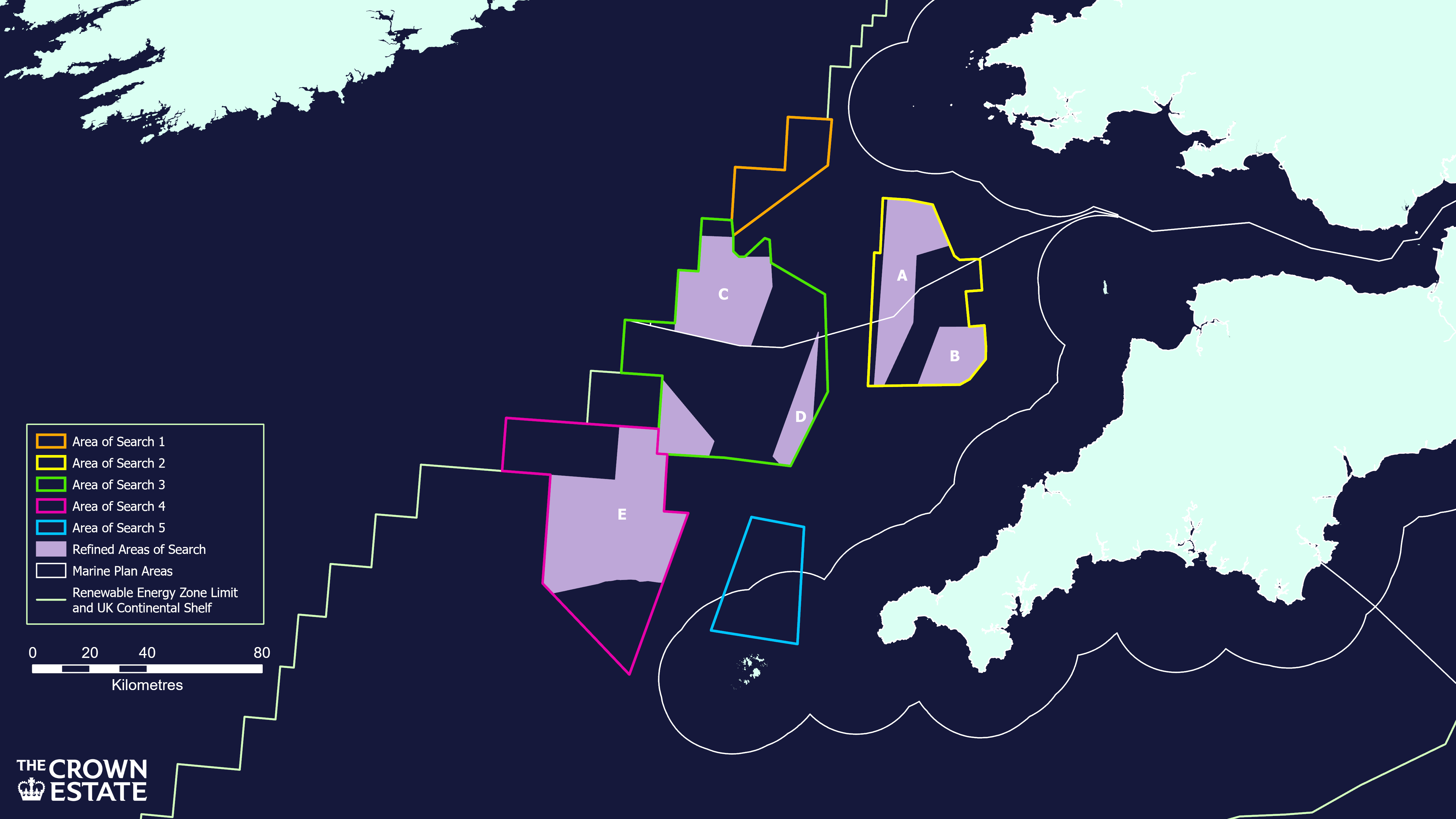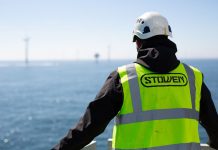The independent body defining licencing zones for Britain’s coastal waters today uncorked plans to define operational patches of the Celtic Sea soon to see floating turbines.
The Crown Estate, commercial guardians of these islands’ seabed as far as the continental shelf, today specified five ‘areas of search’ reaching out from South Wales and the Devon coast.
Outlined after consultations with Whitehall, Wales’ devolved government and other stakeholders, the areas will now be refined into specific development plots.
Auctions of leases to develop projects at least 1 GW in capacity are anticipated to take place in mid-2023. By 2035, the aim is for floating turbines making up to 4GW in sites across the seaway, rising to 20GW ten years later. A map of the five initial areas is here.
The Crown Estate justifies gunning for larger projects in order to support what it calls a ‘stepping stone’ approach. That should foster and strengthen, it believes, a chain of necessary suppliers, including manufacturers and maintenance and servicing firms. More information is promised for the coming months.
The revised Celtic Sea process aims to reduce risk to developers, specifically by bringing forward checks on turbines’ likely effects on fish and birds. In a change to earlier offshore bidding, the Habitats Regulations Assessment will be now be conducted ahead of market tenders and before initiating offshore survey work.
The first of Britain’s floating wind ventures began operation in 2017. Two parks, both located off the Aberdeenshire coast, today total a modest 80 MW.
Last September D-BEIS announced a dedicated budget of £24 million to support floating offshore farms in Allocation Round 4 of CfD auctions. That bidding round will add 60GW of new capacity. The first successful AR4 bidders should receiving their contracts next week.
Non-embedded projects will take around half of the further 24.8 GW offshore wind auctioned in January’s ScotWind bidding round.
Last month wind power advocates RenewableUK published research, substantiating Britain’s world leadership in siting moored but not embedded turbines. The trade body identified 32GW of projects currently in design planning consenting phases for UK waters.
Of licencing in the Celtic Sea, Greg Hands MP, Energy and Climate Change Minister, said:
“We already have the largest offshore wind deployment in Europe. Floating technology is key to unlocking the full potential of our coastline.
“We want to deliver up to 5GW of floating offshore wind by 2030. These projects can help power millions of homes with clean, and cheaper, renewable energy, reducing reliance on expensive fossil fuels.”
Ship-shape and near Bristol, after a fashion
Nicola Clay, the Crown Estate’s head of new marine ventures, declared: “Our current focus is on delivering the proposed 4GW of floating wind power in a phased approach, which will provide important lessons at each stage to support and enable the future growth of the sector.
It gives visibility to a long-term pipeline that will support investment in the regional supply chain and infrastructure, contribute significantly to UK energy security, and help projects in the Celtic Sea reach a scale where they can become more cost-competitive.
Her boss Crown Estate managing director Huub den Rooijen, said:
“The Celtic Sea has the potential to become one of the great renewable energy basins of the world, bringing economic growth and abundant clean power..”




